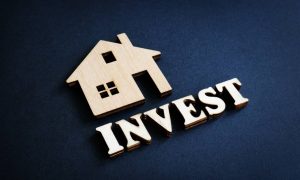Pricing your home right is downright tricky. Too high? Buyers ghost you. Too low? Might as well set fire to a stack of cash. You’ve probably sunk years—maybe decades—into your home. The mortgage payments, the upgrades, the memories. When it’s time to sell, you deserve every dollar possible. Pricing isn’t guesswork; it’s strategy. Throughout this guide, I’ll share tips on how to price your home for sale without leaving money on the table.
Start with a home value estimate

Start by getting a ballpark value for your property. You don’t need a real estate agent to get started. Grab your laptop and run some numbers yourself!
Those online home value estimators? They’re decent for initial reconnaissance. Zillow’s Zestimate, Redfin, Realtor.com—all solid starting places. I still remember punching my address into these tools before meeting with agents. Man, what a confidence boost it was to walk in knowing approximately what my place was worth!
But here’s the catch—and I learned this the hard way. These digital tools don’t know your home like you do. They haven’t seen your updated kitchen or that crack in the basement wall. Sometimes, they’re working with outdated tax records from five years ago!
Try running your address through at least three different estimators. You’ll likely get three different numbers, sometimes wildly so! Don’t freak out. That range becomes your initial sandbox to play in. Remember, these algorithms typically swing 5-20% in either direction. Your gorgeous handcrafted mahogany staircase? The algorithm has no clue about it.
Research housing conditions that impact your home’s market value
Dig more deeply than those cookie-cutter online estimates. The real magic happens when you understand the market forces at play in your neighborhood. Let’s break ’em down.
Inventory levels
Ever heard the phrase “inventory levels” tossed around by real estate folks? Here’s what it means for your bottom line.
Think of inventory as your competition—other home buyers could choose instead of yours. Low inventory? You’re in the driver’s seat! Buyers often pay premium prices and act quickly when they have fewer options.
I witnessed this firsthand in Seattle back in 2021. My buddy listed his modest rambler when inventory had dropped below one month’s supply. Fourteen offers later, he walked away with $78K above the asking price! Crazy times.
Conversely, high inventory means buyers call the shots. They’ll take their sweet time, nitpick every flaw, and lowball you without remorse. Check your local real estate association’s monthly reports for current inventory levels before finalizing your price.
Home price movement
Are home values climbing, sliding, or flat-lining in your area? This trajectory matters enormously when setting your price.
Rising markets give you some breathing room to push boundaries. Buyers expect appreciation and often calculate future value in their offers. During Austin’s boom, I advised sellers to price 3-5% above comparable sales because values were jumping monthly.
In falling markets, though? You’d better stay ahead of the curve. The price is slightly below the most recent comparable sales—yes, below them. It sounds counterintuitive, but chasing the market downward is a losing strategy—those who price reactively rather than proactively usually net less.
Mortgage rates
Never ignore what’s happening with mortgage rates when pricing your home. They directly impact what buyers can afford to pay you.
When rates climb, buyer purchasing power shrinks dramatically. A single percentage point increase can slash buying power by over 10%! During rate hikes, smart sellers adjust expectations accordingly. Your $500K dream price might suddenly exceed what your target buyers can finance.
Conversely, dropping rates can spark buying frenzies. More folks qualify for loans, budgets stretch further, and multiple-offer situations become common. During these windows, testing a more ambitious price often pays off.
Comparable properties
“Comps” aren’t just realtor lingo—they are your pricing goldmine. These recently sold homes tell you precisely what buyers paid for similar properties.
Focus on homes sold within the last 90 days, ideally in your immediate neighborhood. The closer to your location and the more recent the sale, the more valuable the comp. I’m discussing similar square footage, bedroom count, lot size, and condition.
Don’t just average these numbers blindly! Mentally walk through each comp. That colonial that sold for $450K had a brand-new kitchen, but yours needs updating. Subtract accordingly. Your house has a pool, but does the comp not? Add value to that feature. This ain’t math class—it’s detective work.
Seasonality
Timing matters, folks. Most markets experience predictable seasonal swings that smart sellers leverage.
In many regions, spring brings the highest prices and quickest sales. Families want to move during summer break, and homes simply look better with green lawns and flowering trees. My clients who list in April or May typically net 3-7% more than those who list in December.
Winter listings face harsher scrutiny and fewer buyers in most climates. If you’re selling during slower months, consider trimming your price to generate interest. Alternatively, patience often pays off handsomely if you can wait for peak season.
Undercut by 5% to 10% and try to spark a bidding war
Wanna know my secret weapon for maximizing sale prices? Strategic underpricing. Yeah, you heard me right—price it LOW.
Here’s how it works: price your home 5-10% below what comparable analysis suggests it’s worth. This creates a perception of value that drives severe traffic to your listing. More eyeballs mean more potential offers.
I guided a client in Denver through this approach last year. We priced her updated bungalow at $375K when comps suggested $395K. The result? Twenty-seven showings in two days, eleven offers, and a final accepted price of $412K—all cash, no contingencies. The “discount” created a feeding frenzy that pushed the price well beyond our target.
This strategy isn’t for the faint of heart. Your home must show beautifully, and you need a market with decent demand. But when executed properly, it’s pure pricing magic.
Price your home for the online search tools

Most buyers hunt for homes while scrolling on their phones. They set search filters based on price ranges; falling outside these brackets means invisibility.
Price at $305,000 instead of $310,000. Why? Buyers searching up to $300K often stretch their max to include properties up to $305K or $309K. But they’ll never see your $310K listing! Those price band cutoffs—$300K, $350K, $400K—are digital gateways to your potential buyer pool.
This isn’t just theory. Listings priced just below these thresholds consistently receive 30-40% more views online. More views lead to more showings, which lead to more offers and, ultimately, better sales terms.
Factors to Consider When Setting Your Price
Beyond market conditions, several personal factors should influence your pricing strategy. Let’s tackle the big ones.
Current condition of your home
Be brutally honest about your home’s condition compared to recently sold properties. This single factor can swing your value by tens of thousands.
That water stain on the ceiling? Buyers don’t just see a stain—they envision catastrophic roof failure and $15,000 in repairs. Those outdated brass fixtures? In buyers’ minds, they scream, “This entire house is stuck in 1992.”
Fresh paint delivers the highest ROI of any pre-sale improvement—about a $2-3 return for every dollar spent. I’ve seen homes jump $25K in perceived value after a $5K painting overhaul. Minor kitchen updates—new hardware, refreshed backsplash—typically pay back double their cost.
Major renovations rarely make financial sense right before selling. That new kitchen might cost $50K, but it will only increase your sale price by $30K. Focus on repairs and updates that buyers notice immediately during showings.
Your timeline for selling
How quickly do you need to sell? Your timeline dramatically impacts optimal pricing strategy.
Need to sell within 30 days? Price 3-5% below comparable sales to generate immediate interest. Have the flexibility to wait 3-6 months? Test a higher price initially, then adjust if necessary. The luxury of time allows you to fish for that perfect buyer willing to pay a premium price.
Due to rushed timelines, I’ve seen desperate sellers leave $50,000+ on the table. Conversely, stubborn sellers who refuse to adjust their price often net less after months of carrying costs and eventual desperation discounts.
Why Pricing Your Home Correctly Matters

Getting your price right from day one delivers massive advantages throughout your selling journey. Let me explain.
Proper pricing creates momentum. Buyers and agents flock to fresh listings, but that excitement fades drastically after 2-3 weeks on the market. Your first 21 days represent your best opportunity to maximize value.
Overpriced homes quickly develop a stigma. Buyers wonder what’s wrong with the property that others haven’t purchased. Even after price reductions, that psychological damage lingers.
Studies consistently show that initially priced correctly, they sell for more than overpriced homes, requiring later reductions. One analysis of 12,000 listings found that homes priced within 5% of market value sold for 98.9% of the asking price, while overpriced homes averaged just 87.8% of the original list price.
Conclusion
Pricing isn’t just pulling numbers from thin air—it’s strategic positioning based on market intelligence. You wouldn’t sell stocks without checking their value, right? The same goes for your biggest asset.
Start with online estimates, but don’t stop there. Dive into local inventory levels, price trends, interest rates, and comparable sales. Consider seasonal advantages and search tool psychology.
Sometimes, the counterintuitive move—like strategic underpricing—delivers the fattest check at closing. Remember that your initial price sets the tone for your entire selling experience.
I’ve seen this process work hundreds of times for my clients. Put in the research work upfront, and you’ll walk away from closing with confidence that you squeezed every possible dollar from your sale. After all, isn’t that the whole point?
Also Read: Who Pays the Real Estate Commission?
FAQs
Typical commissions run 5-6% of the sale price. Factor this into your net proceeds, not your list price.
Horrible strategy. Overpricing scares away qualified buyers before negotiations even start.
If you’ve had 10+ showings with no offers, or 3+ weeks with minimal traffic, it’s time to adjust.
Small, early adjustments are far better than massive cuts after months of market stagnation.




